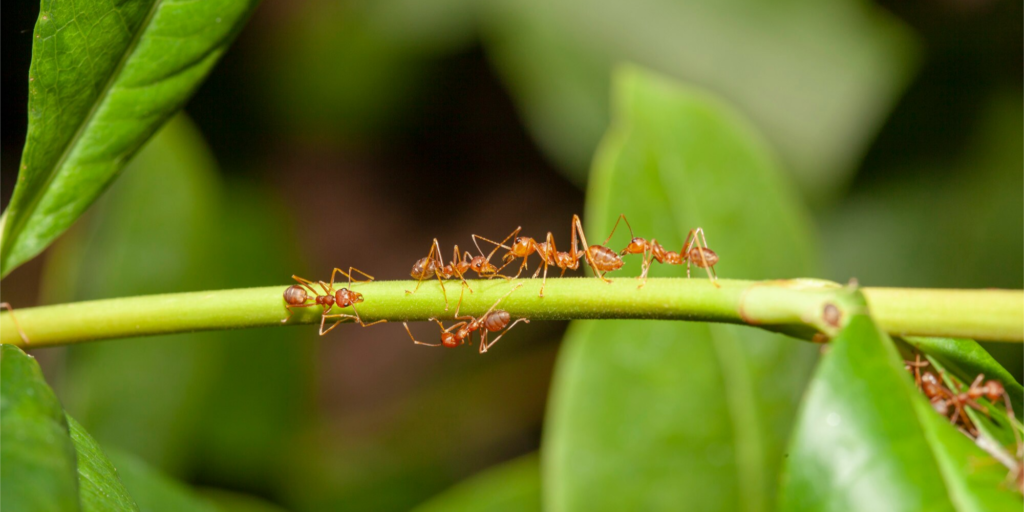A recent paper published in PNAS found that ants are better navigational problem-solvers, especially in groups, than humans!
This group modified the classic piano movers problem, which is a computational problem in robotics, aimed at easily moving a bulky object (a piano) through a path with obstacles. For both the ant and human solvers, this task was modified such that they had to move a proportional piece of load from one space to another. It turns out that large ants groups perform this task more easily, as compared to human groups.
The most important lesson from the ant groups we can take away is decentralized leadership. What it means is that when ants are transporting a large object through a narrow space, they often rely on multiple individuals at different places holding the load to be the ‘informed leader’ for a while. After a few seconds, the leader ant modifies her role to that of a ‘naive follower’, allowing someone else to take the lead. Often in successful collaborative projects, this strategy of decentralized leadership works: people with different expertise step up at different times, and lead the project towards completion.
The other interesting lesson from ant groups is that of being in touch with the problem at all times. This might be a bit literal for the ants and metaphorical for us humans, but hear us out: ant groups ensured that someone or the other was invested in holding the load up at all times. Often individuals dropped off to perform alternative route searches, but they always came back and rejoined the task. A similar strategy should work in collaborative efforts too.
The final takeaway is the importance of task-based communication. While ants normally use pheromones to communicate, the nature of this task rendered smell-based communication useless. The ants communicated exclusively through mechanical cues, by applying different levels of pressure on the load. The human groups were also encouraged to communicate through touch, by covering up their faces with sunglasses and masks to avoid verbal and non-verbal communication through gestures. It turns out that human groups with restricted communication chose more ‘greedy’ options as opposed to more ‘indirect’ measures that would have resulted in faster problem-solving. The ants however, were able to modify their smell-based communication to touch-based strategy more effectively.
When it comes to group work, humans have a lot to learn from ants. Perhaps these ants are better leaders than the ones asking us to work 70-90 hours a week. As far as Diverge Communications is concerned, we are firmly on team ants!







